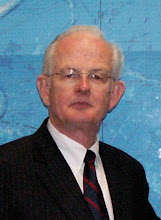While vacationing in Hawaii recently, we attended a stake conference to which Elder Kevin W. Pearson, a member of the First Quorum of the Seventy, was the visiting authority. During a portion of his remarks, he addressed the topic of patterns in the gospel. This experience serves as the springboard for this writing.
The Lord taught the Prophet Joseph Smith the importance of understanding gospel patterns a little more than a year after the organization of His Church in these last days. “And again, I will give unto you a pattern in all things, that ye may not be deceived; for Satan is abroad in the land, and he goeth forth deceiving the nations” (Doctrine and Covenants 52:14). This was an important lesson for not only the Prophet but for our church membership in general. In the early years of the restoration when all of the Saints were new to the true gospel, Satan and his minions had a relatively easy time diverting many from the true practices of their newly acquired religion with often dire consequences. While “drift” from proper practices and patterns will always be a challenge for us, in long-established communities of the Saints, many decades and generations of experience lessen significantly the occurrences of inappropriate practices being adopted in our places of worship.
Possibly, the brief mention of several fundamental gospel patterns would be appropriate here. Under normal circumstances, the Lord will not reveal to us that which is important for our understanding and direction absent our approaching Him for such enlightenment. He expects that we will come to an understanding of our needs as a result of our personal study and contemplation. Once we have formulated a question, concern, or need, we are to prayerfully approach Him in faith. Joseph Smith studied the Bible and determined that the Lord was willing to provide answers to questions and concerns when approached in faith. He contemplatively prepared his question for God before he went into the grove to pray. Oliver Cowdery was chastened by the Lord for thinking that he, Oliver, would be able to translate without first studying the matter out in his own mind and then asking God if his translation was correct (D&C 9:7-9). The Prophet Moroni was very clear on the procedure one must use to prove the truthfulness of the Book of Mormon. “And when ye shall receive these things, [In verse three, Moroni makes clear that to ‘receive’ means to ‘read’ the book.] I would exhort you that ye would ask God, the Eternal Father, in the name of Christ, if these things are not true; and if ye shall ask with a sincere heart, with real intent, having faith in Christ, he will manifest the truth of it unto you, by the power of the Holy Ghost” (Moroni 10:4).
Another gospel pattern is illustrated in the relationship that exists between covenants and ordinances. Each time we participate in one of the five saving ordinances, we conclude a multi-part covenant with God. When we are baptized and confirmed for example, we promise to “serve God” and “keep his commandments” (Mosiah 18:10). The Melchizedek Priesthood is conferred upon a brother with an “oath and covenant” (D&C 84:33-41). The concluding of covenants with God is an integral part of participating in temple ordinances. The importance of concluding covenants with God was explained simply by Elder John A. Widtsoe: “The covenant made in the temple, or elsewhere, if of the right kind, is merely a promise to give life to knowledge, by making knowledge useful and helpful in man’s daily progress. Temple work, or any other work, would have no meaning unless accompanied with covenants” (See page 17 of the temple preparation manual).
One may see a gospel pattern in the saving ordinances themselves. Here I have reference to the Plan of Salvation or Plan of Happiness. Our demonstration of faith and works in the pre-mortal, mortal, and post-mortal phases of our existence will determine our condition, circumstances, and opportunities for eternity. Even within the celestial kingdom itself there are “three heavens or degrees” (D&C 131:1). The minimal number of ordinances in which we must participate in order to obtain the least of these degrees is two, namely baptism and confirmation. To be worthy to obtain the highest of these degrees requires that an individual participate in the new and everlasting covenant of marriage (D&C 131:2).
Finally for my purposes here, marriage and family illustrate a most important gospel pattern. In 1995, the First Presidency and the Council of the Twelve Apostles of The Church of Jesus Christ of Latter-day Saints issued a proclamation concerning “The Family.” Making no attempt here to summarize the details of this Proclamation, it suffices me to say that “the family” is a pattern of heaven. There, we will be organized in a patriarchal order that will eventually link the generations of the earth back to our first parents.
As the Lord instructed the Prophet Joseph Smith in 1831, understanding and participating in these gospel patterns will very much work in our favor as we attempt to avoid being deceived by Satan and those around us who support his ends willingly or unknowingly.
